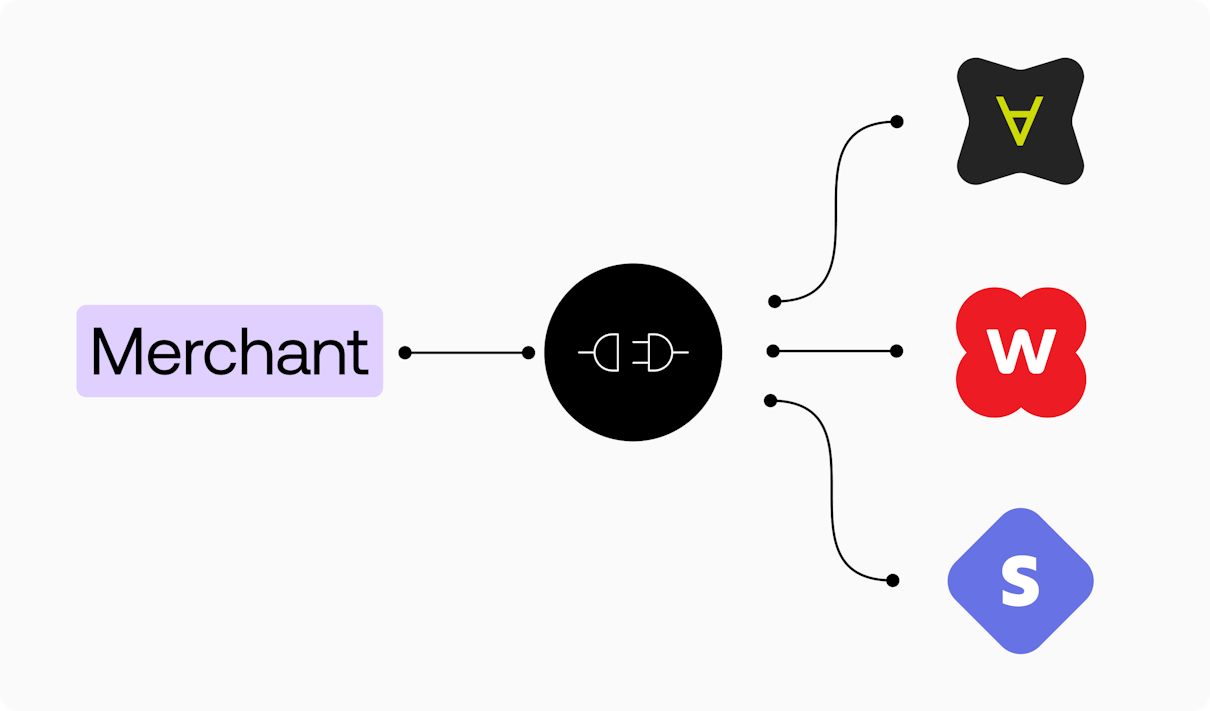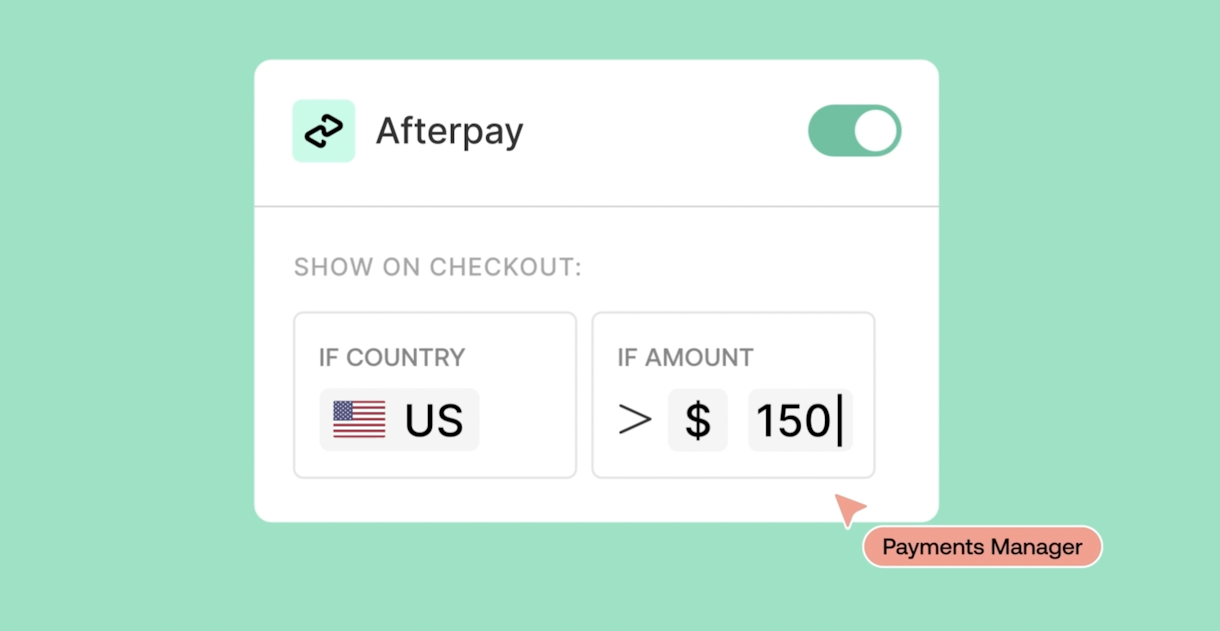When more is more: Why using one payment processor doesn’t cut it

It’s long been the case that payments are seen as a cost center for many businesses, a necessary evil in order to survive. So why do 57% of merchants have multiple payment processor relationships? And how can any business afford the monetary and engineering costs of continuously building and maintaining these integrations?
This article answers both of these questions and provides context on why payment orchestration has become one of the fastest-growing areas in fintech.
But first, some background
To write about this 25 years ago would’ve been pretty strange, as it was commonplace for merchants to be connected to multiple payment processors. So, what happened over that period to take us full circle?
As the internet boomed, online businesses were forced to partner with multiple payment processors globally to serve new customers they were able to attract. Typically, they’d do this by integrating what’s known as a payment gateway. A payment gateway builds and certifies tens or hundreds of processor connections across the globe. This gave merchants great coverage, but the payment gateways were built on technology from the ‘80s, which wasn’t particularly well-suited to scaling online businesses.
Cue the all-in-one, API-first solutions pioneered by PayPal, Stripe and Adyen, who together combined an easy-to-integrate gateway with global acquiring coverage. This solved the problem of aging gateway technology, and also gave merchants a single point of contact for all their payments needs. A win-win! All was well as these companies (and others) built out hugely impressive feature sets and payment method coverage.
This approach was so successful that it helped drive a boom in fintech innovation, and now, there are far more features, locations and payment options available to merchants than any single all-in-one solution could possibly keep up with. Not wanting to miss out on this growth, merchants have taken it upon themselves to build integrations into multiple payment methods, fraud services and processors.

But this in itself is not without pitfalls. Each new integration requires upfront development cost and ongoing maintenance, plus new processes and operational tasks to implement. Merchants are put off entering new markets or testing new payment methods, as the barrier to entry is just too large.
A new hope: payment orchestration
Enter payment orchestration. Payment orchestrators build connections into hundreds of processors and payment methods behind a single API, allowing merchants to quickly penetrate new markets and test out new payment methods. In fact, it’s one of the hottest fintech trends, with a predicted compound annual growth rate of 25% by 2030.
The rise of payment orchestrators has allowed merchants to offload some of that development cost, and helped even the smallest businesses build out a complex payment stack.

But this still doesn’t answer why merchants need this. Why not wait for your current processor to add support for these new capabilities?
Get our payment orchestration buyers guide and free RFP template.
Speed to market
The new breed of payment processors moves quickly, but still wants to maintain that all-in-one offering. This means they need to build out everything, from onboarding to fund allocation, compliance, reporting and more—for each new payment method or region they open up, which all takes time.
Payment orchestrators are not typically involved in transferring money and the regulatory requirements that come with it, so they have the ability to move a lot quicker, as a merchant would. Unlike a merchant, building payment features is all a payment orchestrator does, all day, every day. This allows your average payment orchestrator to have a much bigger pool of payment options to choose from, helping merchants connect to more customers worldwide.
Redundancy
Even if businesses were happy to wait and watch their competition steal a march by attracting new customers to their platform (they’re not), they’d still be 100% dependent on a single payment processor.
If we take another brief history lesson: Less than 15 years ago, nearly every business built and maintained their own server infrastructure. There were multibillion-dollar companies with a single point of failure in their business, or who’d need to manually fail over to their backup server. This seems archaic now. With the rise of AWS and cloud infrastructure, backup servers automatically step in for any latency or downtime, and efficiencies are gained by deploying to local regions. The same should be true for payment infrastructures.

Every second counts in a payment outage, which is why merchants are increasingly connecting multiple payment processors to payment infrastructure services with built-in redundancy, rather than painstakingly building their own failover solution, or worse—being left to wait for their processor to fix the problem..!
Revenue
There are many great payment processors out there. Stripe, Adyen, Worldpay, Mollie, Braintree and many more are all very good global payment processors, but each still has their own strengths and weaknesses.
By working with multiple payment processors, merchants are able to analyze performance across regions, customer segments and various KPIs to identify any improvements that can be made to boost their revenue. Many large enterprise merchants have dozens and even hundreds of employees dedicated just to this. Every last detail is analyzed to gain an advantage.
Individually, the gains to be made from this are small, which is why only the largest merchants can afford to build this mechanism themselves. But with payment orchestration tools, any merchant can set up complex routing logic with no code or associated developer costs.
Risk reduction
One of the worst things that can happen to a fledgling business is to be hit by a sophisticated fraud attack. Not only due to the financial impact, but also the reputational damage. To make matters even worse, processors have been known to close accounts with little warning to businesses that fell victim to these attacks, or operate in a high-risk industry.
In this scenario, having the ability to open an account and move to a new payment processor with zero code can be the deciding factor on whether a business survives or not.
Luckily, payment orchestration tools can also help combat fraud by offering a range of fraud services that are compatible with any processor. Meaning, it’s far less likely you’ll be put in this situation in the future.
Find out if your business needs a payment orchestration platform.
How to choose the right payment orchestration platform
There are four important criteria to consider when choosing a payment orchestration solution for your business:
A low-code approach
Unified data
PCI and vaulting
Operational support
Low-code approach

Choosing a partner that supports all the payment processor and payment method connections you need is only half of the battle. If you’ve integrated with the payment orchestrator, but then need to maintain complicated business logic to switch traffic between processors, you’re only shifting the problem to another team.
Make sure to assess if the partner offers a low-code routing logic, and whether you’re able to reap the benefits of payment orchestration, without needing to plan out your engineering roadmap for each update.
Unified data
Once you’ve found a solution that can support no-code payment routing, make sure to assess whether it provides a unified view of your data. Are you able to access payment data in your own data warehouse to get insights? Or better yet, can the solution provide reporting into payment performance across all your processors and payment methods from the same orchestration platform?
Without access to detailed insights on your payment data, you’ll be attempting to orchestrate payments with a blindfold on.
PCI & vaulting
One of the great benefits of payment orchestration is being able to offer redundancy and optimized routing. However, to do this, you’ll need to find a solution that’s PCI-1-compliant and able to vault its own payment method tokens.
If tokens are instead stored with the payment processor, they cannot be reused in the event of an outage, or if you identify optimizations further down the line.
Operational support
If you’re a developer, product or payments manager reading this, payment orchestration may sound like the answer to all your problems. However, if you’re a finance or operations manager, you’re likely starting to worry about how you’ll manage all the new workflows introduced as more payment processors and methods are supported.
The essential solution? Finding a tool that’s able to offload these challenges as well. Does the payment orchestration platform provide a unified reconciliation format or a single view of disputes across all your payments? Can the orchestrator sync data to third-party ERP and accounting tools? If the answer to these is no, adding new payment processors and methods won’t be an easy feat.
Bottom line
Large companies have the resources to add, build out and maintain payment processor integrations on their own, but this still usually involves large teams (of up to hundreds) to manage.
Forget the costly dev resources, slow payment roadmaps, and increasing anxiety to keep up as innovative payment solutions are introduced every day. The right payment orchestration platform can now enable any business to have this same level of detail when it comes to payments, and help futureproof your payment stack for days to come.
Ahhh, sweet relief.
Interested in learning more about payment orchestration and how using the right platform can continuously optimize your business? Get in touch with us at Primer.